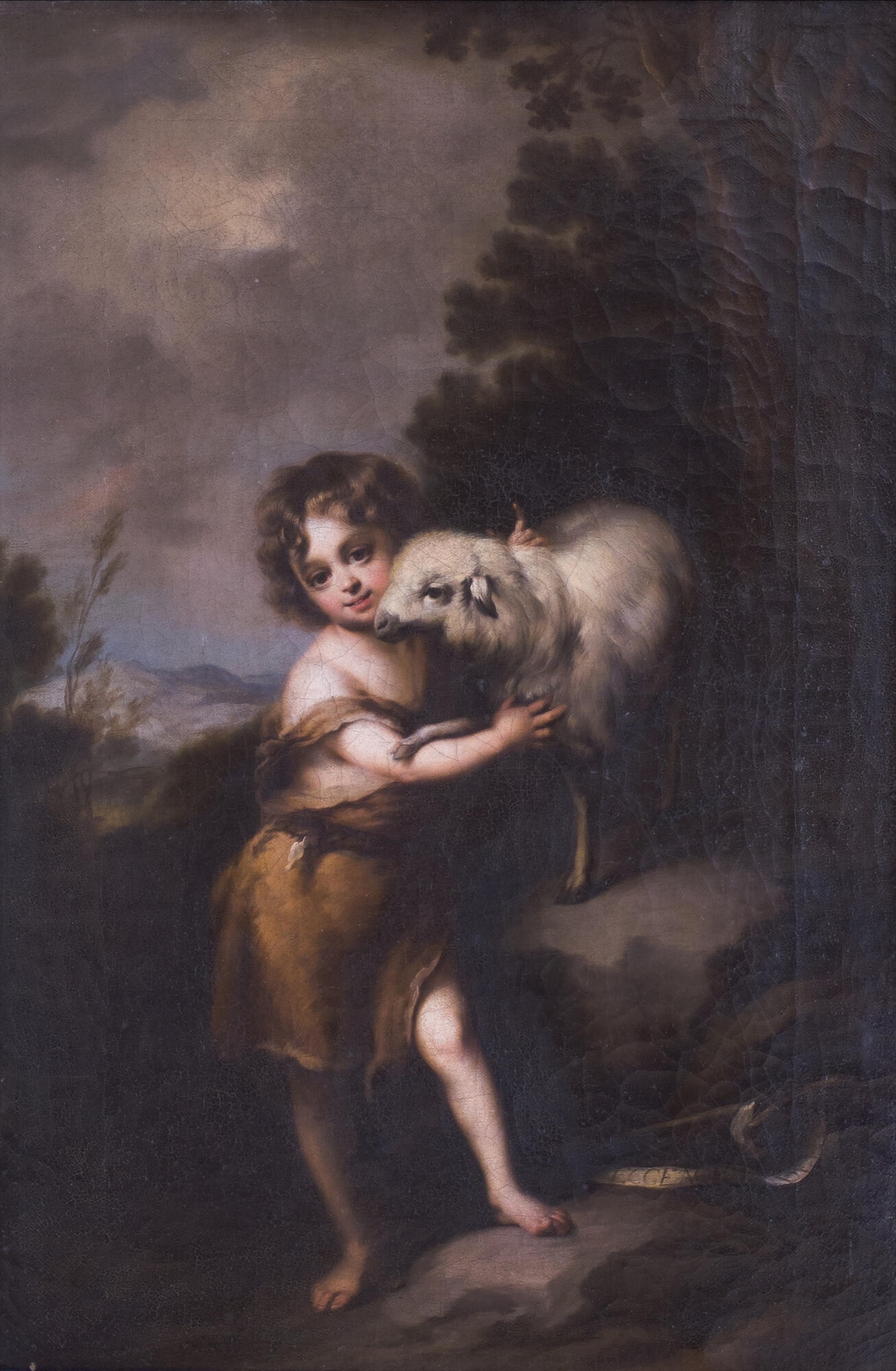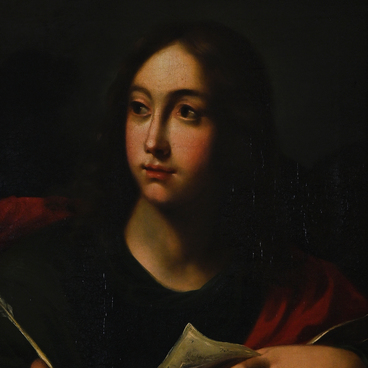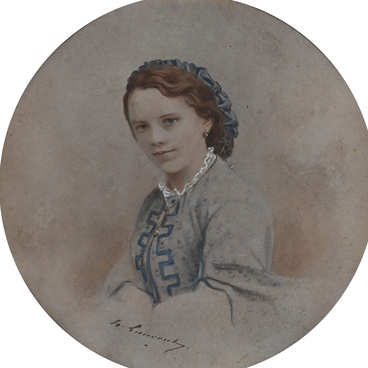The work of an unknown 19th–century artist, ‘John the Baptist with the Lamb’ was transferred to the Pyotr Tchaikovsky house-museum from the Pavlovsk Palace in December 1968.
The painting is a reproduction of the work by a 17th–century Spanish artist, Bartolomé Esteban Murillo. The original was commissioned to decorate the altar of Santa María la Blanca Church in Seville opened in 1665. The image of John the Baptist was a pair painting to ‘The Infant Christ as the Good Shepherd’. Presently, it is housed in the National Gallery in London. There are also author’s copies of this work that are now in the museums of Madrid and Vienna.
The childhood and religious themes were key motifs in Murillo’s work. In the painting, the young John the Baptist is depicted with a lamb which symbolizes Jesus Christ. The diagonal composition of the painting is characteristic of the Baroque style.
Murillo’s life was closely connected with religion. He was born in a monastery house and died working on an altarpiece for the Capuchin monastery in Cádiz.
Bartolomé Esteban Murillo was one of the most famous artists of the Spanish Golden Age, a master of religious and genre scenes, the head of the Academy of Fine Arts in Seville.
His first teacher was Juan del Castillo, a famous 16th–century master of the Baroque style. Murillo was very young when his teacher left the city of Seville in search of work. So, since 1639, the artist worked alone. He created paintings on religious themes and sold them at local fairs. A year later, he moved to Madrid where he met Diego Velázquez.
With his help, Esteban Murillo gained access to the royal storeroom with paintings where he created reproductions of Peter Paul Rubens and Titian. Two years later, he received his first major commission: a series of paintings for a Franciscan monastery in Seville which brought him fame.
Murillo created about 450 paintings, most of which were dedicated to a religious theme. Art experts note that the painter’s works are full of life and energy, and that he was a skillful colorist and master of chiaroscuro.
The painting is a reproduction of the work by a 17th–century Spanish artist, Bartolomé Esteban Murillo. The original was commissioned to decorate the altar of Santa María la Blanca Church in Seville opened in 1665. The image of John the Baptist was a pair painting to ‘The Infant Christ as the Good Shepherd’. Presently, it is housed in the National Gallery in London. There are also author’s copies of this work that are now in the museums of Madrid and Vienna.
The childhood and religious themes were key motifs in Murillo’s work. In the painting, the young John the Baptist is depicted with a lamb which symbolizes Jesus Christ. The diagonal composition of the painting is characteristic of the Baroque style.
Murillo’s life was closely connected with religion. He was born in a monastery house and died working on an altarpiece for the Capuchin monastery in Cádiz.
Bartolomé Esteban Murillo was one of the most famous artists of the Spanish Golden Age, a master of religious and genre scenes, the head of the Academy of Fine Arts in Seville.
His first teacher was Juan del Castillo, a famous 16th–century master of the Baroque style. Murillo was very young when his teacher left the city of Seville in search of work. So, since 1639, the artist worked alone. He created paintings on religious themes and sold them at local fairs. A year later, he moved to Madrid where he met Diego Velázquez.
With his help, Esteban Murillo gained access to the royal storeroom with paintings where he created reproductions of Peter Paul Rubens and Titian. Two years later, he received his first major commission: a series of paintings for a Franciscan monastery in Seville which brought him fame.
Murillo created about 450 paintings, most of which were dedicated to a religious theme. Art experts note that the painter’s works are full of life and energy, and that he was a skillful colorist and master of chiaroscuro.



